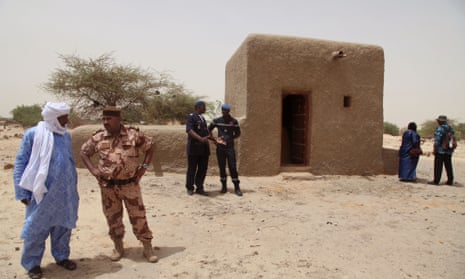Some of the ancient mausoleums of Timbuktu, shrines and tombs of Sufi saints which were a place of pilgrimage for centuries have been restored through a local and international project, three years after they were deliberately destroyed by armed groups linked to al-Qaida.
The director general of Unesco, Irina Bokova, visited the city in Northern Mali on Sunday, praising the reconstruction work as “an answer to all extremists whose echo can be heard well beyond the borders of Mali”.
The 16 tombs, the treasures of a place known as “the city of 333 saints”, some dating back to the 13th century, were believed by the local people to protect their city from danger. The saints were renowned for their scholarship as well as their piety, and their memorials formed part of the Timbuktu World Heritage Site, the Unesco list of the world’s most important monuments. In 2012, 14 were destroyed, leaving heaps of broken stone and mud, apparently a deliberate response by the militia days after Unesco placed the tombs on the “at risk” register.
The work has been carried out by local masons using traditional building techniques, collecting old photographs and surviving fragments of the walls as patterns to rebuild using the local stone mortared with banco, a mixture of clay and straw. The first monuments chosen for restoration were to three saints from different regions, one from Timbuktu, one from Algeria, and one from Djenné in the Niger delta.
Bokova paid tribute to their work, calling it “a lesson in tolerance, dialogue and peace”. She said: “Your endeavour to safeguard essential elements of your history is proof of Mali’s recovery, rallying and regained confidence.”
Timbuktu has been known since ancient times as a centre of learning and trade. In the 12th century it became the site of one of the world’s earliest universities, which at its height in the 15th century is said to have had 25,000 students. But the area has been in near-terminal decline in more recent years, its agriculture destroyed by desertification and its tourist industry by war.
When Malian and UN troops took back the city and the invading militia finally fled, it emerged that much of the famous ancient library had been looted and burned, though residents managed to hide many of the precious manuscripts and books under floors or in attics, or smuggled them out of the city to safety.
The reconstruction of the tombs, which were formally reopened at the weekend, has cost $500,000 (£320,000) but work continues on other ravaged sites in the city.
